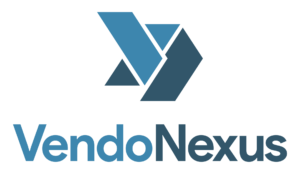As digital advertising evolves, so does the need for more precise and accurate attribution models to measure campaign effectiveness. Traditional last-click attribution fails to capture the full customer journey, leading to misallocated budgets and missed opportunities. Today, advanced AI-driven attribution models provide a clearer, data-driven picture of which touchpoints contribute most to conversions—helping advertisers optimize spend and improve ROI.
What Are Attribution Models?
Attribution models assign value to different interactions (or “touchpoints”) that a consumer has with a brand before making a conversion (e.g., a purchase, sign-up, or download). Instead of giving full credit to the last interaction, modern attribution models distribute credit across multiple channels and touchpoints to reflect real consumer behaviour.
Traditional Attribution Models vs. Advanced Models
Advanced AI-Driven Attribution Models
-
Data-Driven Attribution (DDA)
- Uses machine learning to analyse historical data and assign credit based on actual performance patterns.
- Example: A DDA model might reveal that a Facebook ad contributed more to conversions than previously assumed.
-
Multi-Touch Attribution (MTA)
- Evaluates how each interaction influences a conversion rather than relying on a single point of reference.
- Helps advertisers understand the true impact of display, social, search, and video ads.
-
Incrementality-Based Attribution
- Measures the true lift an ad campaign provides by comparing exposed vs. unexposed audiences.
- Example: A brand runs A/B tests to measure whether ads truly drive conversions or if users would have converted anyway.
-
Marketing Mix Modelling (MMM)
- Uses statistical analysis to evaluate the impact of various marketing channels (both online and offline).
- Best for large brands managing multi-million-dollar ad budgets across TV, digital, print, and more.
Why Advanced Attribution Models Matter
1. More Accurate Budget Allocation
- Helps advertisers invest in high-performing channels and eliminate wasteful spending.
2. Better Understanding of Customer Journeys
- Reveals which touchpoints drive awareness, consideration, and conversions.
3. Stronger Cross-Channel Strategies
- Ensures cohesion between display, social, search, and CTV advertising.
4. Privacy-First Measurement
- Modern models rely on first-party data and AI, reducing dependency on third-party cookies.
5. Higher ROI & Optimized Ad Performance
- AI-driven attribution ensures brands maximize impact while minimizing wasted spend.
Challenges and Considerations
-
Complexity in Setup & Analysis
- Advanced models require data integration across multiple platforms (Google Ads, Facebook, CTV, etc.).
-
Privacy & Data Restrictions
- With regulations like GDPR and CCPA, advertisers must rely more on first-party data and anonymized analytics.
-
Lag in Real-Time Insights
- Some models, like MMM, require historical data and may not provide instant results.
The Future of Attribution Models
🔹 AI-Powered Predictive Attribution: Advanced machine learning will forecast ad effectiveness before campaigns launch.
🔹 Blockchain-Based Attribution: Blockchain technology will improve transparency and eliminate ad fraud.
🔹 Cookie-less Attribution: Future models will rely more on privacy-friendly tracking techniques, like server-side tagging and contextual data.
As ad spend continues to rise, understanding the true impact of marketing efforts is no longer optional—it’s essential. Brands that adopt advanced attribution models will outperform competitors by making data-driven decisions that maximize ROI.
👉 Want to upgrade your attribution strategy? Contact Vendo Nexus today for expert solutions!


